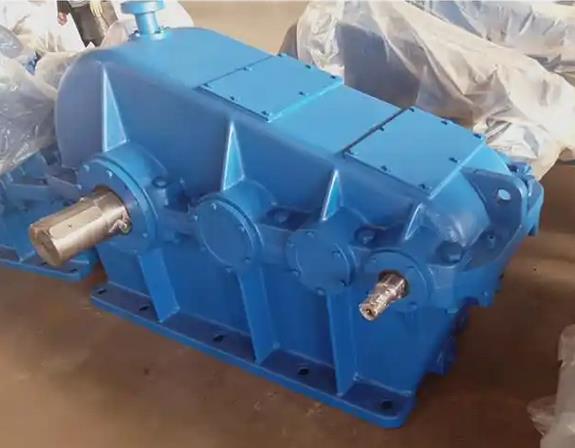How to reduce the impact of environmental temperature on the output speed of the four series of gears and reducers, including the S57-10.78 series
The influence of ambient temperature on the output speed of the 257 gearbox is mainly achieved by affecting the viscosity of lubricating oil and the thermal expansion of components such as gears and bearings. Here are some methods to reduce the impact of ambient temperature on the output speed of the E7 gearbox:

Choose the appropriate lubricating oil
Use lubricating oil with high viscosity index: Lubricating oil with high viscosity index is less affected by temperature changes and can maintain a relatively stable viscosity at different temperatures, ensuring good lubrication and transmission efficiency inside the gearbox. For example, Mobil 630 series gear oil can be used, which has a high viscosity index and can adapt to a wide temperature range.
Adjust the viscosity of lubricating oil according to the ambient temperature: In low-temperature environments, low viscosity lubricating oil should be used to reduce oil resistance and avoid a decrease in output speed due to excessive viscosity of the lubricating oil. On the contrary, in high-temperature environments, high viscosity lubricating oil is required to ensure sufficient oil film strength, prevent excessive wear of components such as gears and bearings, and affect output speed.
Improve heat dissipation conditions
Adding heat sinks: Installing heat sinks on the gearbox housing can increase the heat dissipation area, improve heat dissipation efficiency, and enable the heat generated inside the gearbox to be dissipated to the surrounding environment in a timely manner, thereby reducing the internal temperature. For example, evenly arranging heat dissipation fins on the casing of the 257 gearbox can effectively reduce the temperature during gearbox operation.
Installing a cooling fan: For situations with high ambient temperatures or heavy loads, a cooling fan can be installed near the gearbox to accelerate heat dissipation through forced air cooling. The air volume and speed of the fan should be reasonably selected according to the power and heat dissipation requirements of the reducer.
Optimize installation location: Install the reducer in a well ventilated area to avoid obstacles blocking air circulation and ensure that air can freely flow around the reducer to remove heat.
Adopting temperature compensation measures
Install temperature sensors: Install temperature sensors inside or at critical locations of the gearbox to monitor temperature changes in real-time. When the temperature exceeds the set value, the sensor sends a signal to the control system for taking corresponding measures.
Temperature based speed control: Combined with feedback from temperature sensors, the motor speed is adjusted through the control system. When the ambient temperature rises, causing an increase in the internal temperature of the gearbox, reduce the motor speed appropriately to reduce the load and heat generation of the gearbox; When the temperature decreases, increase the motor speed accordingly to maintain stable output speed.
Strengthen maintenance and upkeep
Regular inspection and replacement of lubricating oil: Regularly inspect the quality and quantity of lubricating oil, promptly replace deteriorated or contaminated lubricating oil, and ensure good performance of lubricating oil. At the same time, maintain the correct oil level to ensure good lubrication and heat dissipation.
Check the wear of components: Regularly inspect the wear of gears, bearings, and other components of the gearbox, and promptly identify and replace severely worn components. Worn parts may cause a decrease in transmission efficiency, generate more heat, and thus affect output speed.



